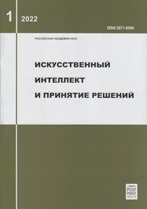|
Machine learning, neural networks
Internet traffic prediction model
S. L. Frenkel, V. N. Zakharov
Federal Research Center "Computer Science and Control" of Russian Academy of Sciences, Moscow, Russia
Abstract:
The main methods for predicting traffic in telecommunications networks are the methods and techniques of Machine Learning (ML). As a rule, within the framework of the MO approach, the network traffic predictor is considered as a tool that uses one way or another accumulated statistics over time to draw conclusions about the future behavior of network traffic [4]. However, as the analysis of the literature shows, many modern MO tools, primarily neural networks, do not work efficiently enough due to the pronounced non-linearity of traffic changes and non-stationarity. Among the tasks of forecasting, the task of predicting signs of increments (direction of change) of the process of time series is singled out separately. The article proposes to use some results of the theory of random processes for a quick assessment of the predictability of signs of increments with acceptable accuracy. The proposed fast prediction procedure is a simple heuristic rule for predicting the increment of two adjacent values of a random sequence. Knowledge of the laws of time series probability distributions is not required. The connection with this approach for time series with known approaches for predicting binary sequences is shown. The possibility of using the experience of predicting the absolute values of traffic when predicting the sign of the change is also considered.
Keywords:
prediction, network traffic, random time series.
Citation:
S. L. Frenkel, V. N. Zakharov, “Internet traffic prediction model”, Artificial Intelligence and Decision Making, 2022, no. 4, 66–77; Scientific and Technical Information Processing, 50:5 (2023), 397–405
Linking options:
https://www.mathnet.ru/eng/iipr82 https://www.mathnet.ru/eng/iipr/y2022/i4/p66
|

| Statistics & downloads: |
| Abstract page: | 71 | | Full-text PDF : | 62 |
|




 Contact us:
Contact us: Terms of Use
Terms of Use
 Registration to the website
Registration to the website Logotypes
Logotypes









 Citation in format
Citation in format 